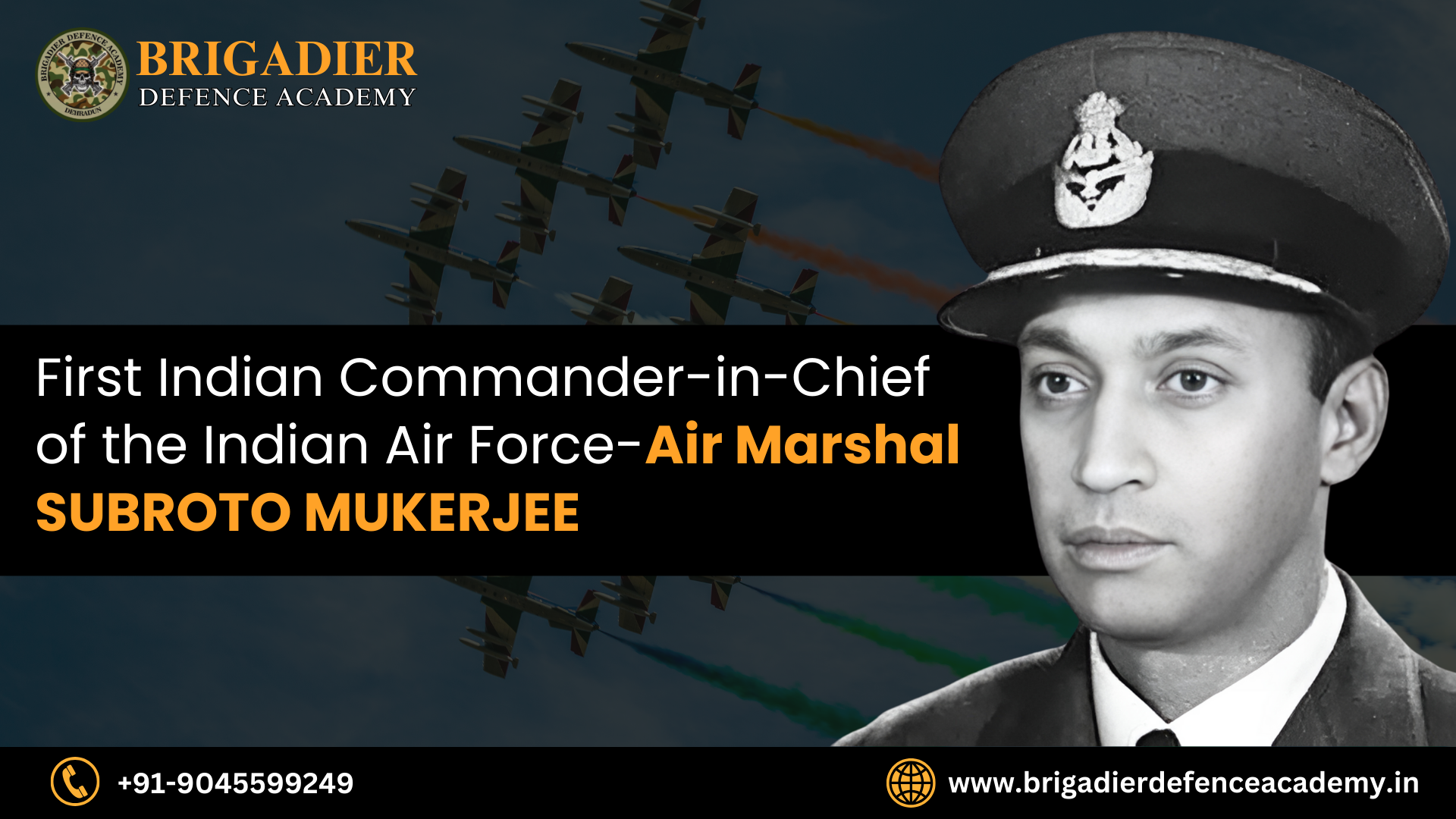- Posted on
- suraj
- No Comments
Air Marshal Subroto Mukerjee: The First Indian Commander-in-Chief of the Indian Air Force
Air Marshal Subroto Mukerjee is celebrated as a pivotal figure in the history of the Indian Air Force (IAF). His journey from the early days of aviation in India to becoming the first Indian Commander-in-Chief of the IAF is not only inspirational but also a testament to his leadership, vision, and dedication. Mukerjee’s contributions played a crucial role in shaping the IAF into a formidable force. This article delves into his life, career, and the lasting impact he had on the Indian Air Force.
Early Life and Education of Subroto Mukerjee
Subroto Mukerjee was born on March 5, 1911, in Kolkata (then Calcutta), British India. He hailed from a prominent Bengali family with a rich cultural and educational background. Mukerjee’s early education was at St. Xavier’s College, Kolkata, where he excelled in academics and extracurricular activities. His interest in aviation was sparked during his college years, a period when aviation was still in its infancy in India.
Mukerjee’s passion for flying led him to join the Royal Air Force College at Cranwell in the United Kingdom. He was one of the first Indians to be selected for this prestigious institution, which laid the foundation for his illustrious career in the Air Force. His training at Cranwell was rigorous, but Mukerjee’s determination and skill saw him through, graduating in December 1932 as a Pilot Officer.
Early Career in the Royal Indian Air Force of Subroto Mukerjee
Upon his return to India, Subroto Mukerjee joined the Indian Air Force, which was then a part of the Royal Air Force (RAF) under British colonial rule. His early years in the Royal Indian Air Force (RIAF) were marked by several challenges, including limited resources, training facilities, and a nascent aviation infrastructure.
During World War II, the RIAF saw significant action, and Mukerjee played a vital role in various operations. He served in different capacities, including as a flight commander and later as a squadron leader. His leadership and strategic acumen were instrumental in several successful missions against the Japanese forces in Burma (now Myanmar).
Rise to Prominence
After the end of World War II, the RIAF underwent a period of reorganization and modernization. Mukerjee was at the forefront of these efforts, advocating for better training, equipment, and infrastructure for the Air Force. His vision was to transform the RIAF into a modern, efficient fighting force capable of defending India’s skies.
In 1947, India gained independence from British rule, and the RIAF was renamed the Indian Air Force (IAF). The newly independent nation faced numerous challenges, including the integration of princely states, communal violence, and the partition of the country. During this tumultuous period, the IAF played a crucial role in maintaining peace and security.
Commander-in-Chief of the Indian Air Force
In 1954, Subroto Mukerjee achieved a historic milestone when he was appointed as the first Indian Commander-in-Chief of the Indian Air Force. This was a significant moment not only for Mukerjee but also for the nation, symbolizing India’s transition from colonial rule to sovereign governance. As the head of the IAF, Mukerjee’s vision and leadership were crucial in steering the force through its formative years.
One of Mukerjee’s primary objectives was to modernize the IAF. He recognized the need for advanced aircraft, better training programs, and a robust support infrastructure. Under his leadership, the IAF acquired new aircraft, including jet fighters and transport planes, which significantly enhanced its operational capabilities. Mukerjee also emphasized the importance of indigenous production and worked towards establishing domestic aerospace industries.
Contributions to Civil Aviation
In addition to his military achievements, Air Marshal Subroto Mukerjee made significant contributions to civil aviation in India. He was a strong advocate for the development of commercial aviation and played a pivotal role in the establishment of Air India, the national airline. Mukerjee’s vision extended beyond military aviation, recognizing the importance of a robust civil aviation sector for the country’s economic growth and connectivity.
Legacy and Impact
Air Marshal Subroto Mukerjee’s legacy is deeply embedded in the history and evolution of the Indian Air Force. His contributions laid the foundation for the IAF’s growth into a modern and formidable air force. Mukerjee’s emphasis on training, modernization, and indigenization set the course for the IAF’s future development.
One of Mukerjee’s enduring legacies is the focus on indigenous production and self-reliance. His vision inspired the establishment of aerospace industries in India, leading to the development of domestic aircraft and aviation technologies. This drive for self-reliance has continued to influence the IAF’s strategic decisions and has been instrumental in reducing dependency on foreign suppliers.
Personal Life and Character
Beyond his professional achievements, Subroto Mukerjee was known for his humility, integrity, and dedication. He was a leader who led by example, earning the respect and admiration of his colleagues and subordinates. Mukerjee’s commitment to his duty and his country was unwavering, and his personal qualities endeared him to those who worked with him.
Mukerjee’s personal life was marked by his love for flying and his passion for aviation. He was a voracious reader and had a keen interest in history and military strategy. Despite the demands of his career, Mukerjee remained a devoted family man, balancing his professional responsibilities with his personal life.
Challenges and Overcoming Adversity
Throughout his career, Mukerjee faced numerous challenges, both operational and administrative. The early years of the IAF were fraught with difficulties, including limited resources, technological constraints, and the task of building a new defense force from scratch. Mukerjee’s ability to navigate these challenges and find innovative solutions was a testament to his leadership and vision.
One of the significant challenges Mukerjee faced was the integration of the IAF with the newly independent India’s defense structure. The partition of India in 1947 had led to the division of assets, including military equipment and personnel. Mukerjee played a critical role in managing this transition, ensuring that the IAF remained a cohesive and effective force.
Air Marshal Subroto Mukerjee’s life and career are a shining example of dedication, leadership, and vision. As the first Indian Commander-in-Chief of the Indian Air Force, he played a pivotal role in shaping the force into a modern, efficient, and self-reliant entity. His contributions to military and civil aviation, his emphasis on training and indigenization, and his personal qualities of integrity and humility have left an indelible mark on the IAF and the nation.







